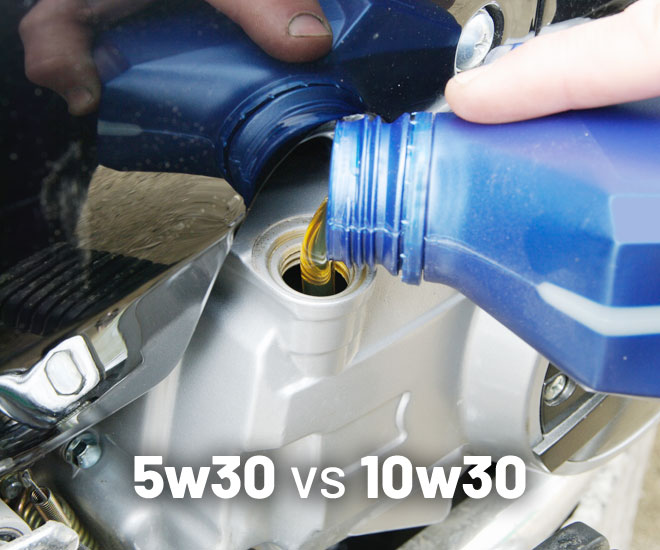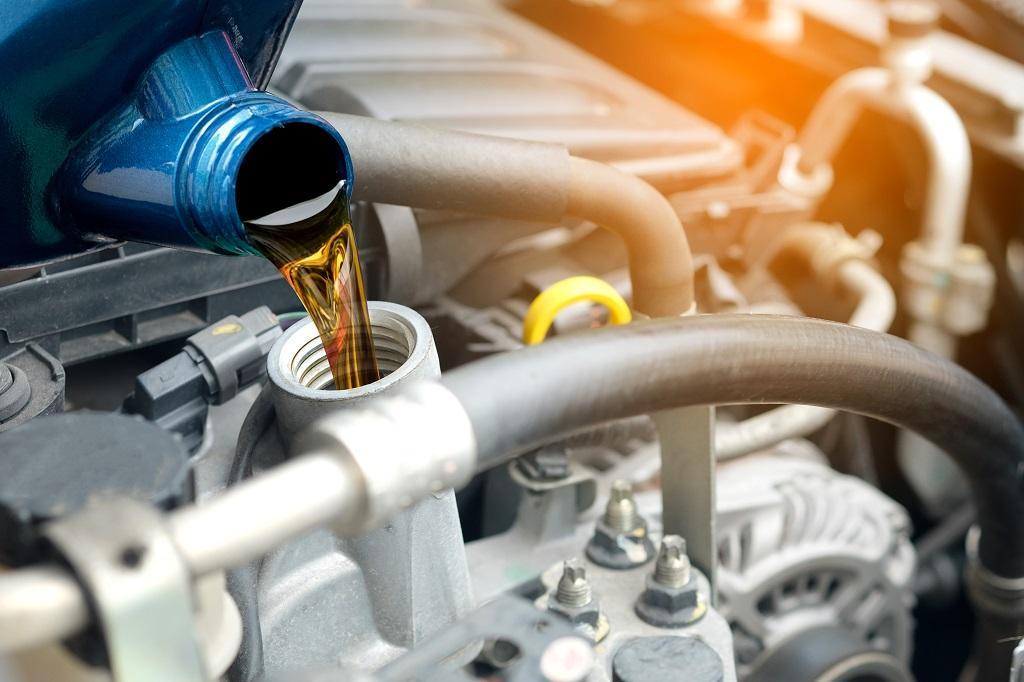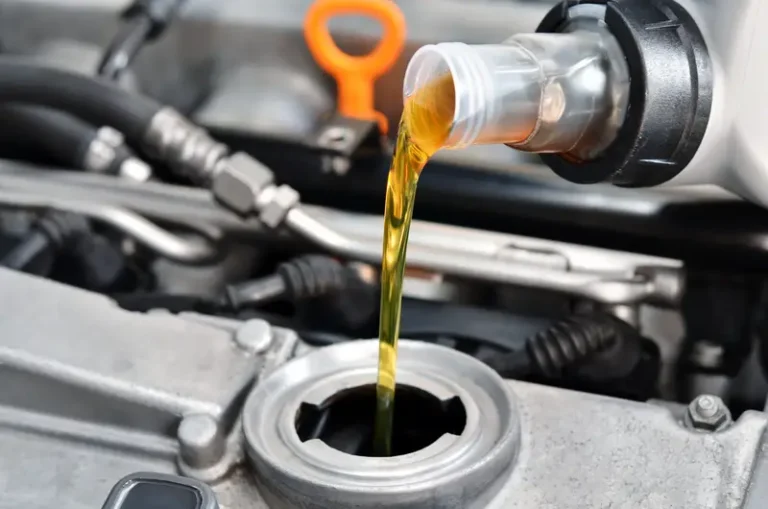When considering using 10W-40 instead of 5W-30 engine oil, it’s important to note a few key factors. While using 10W-40 may not immediately harm your engine, it’s essential to understand the differences in viscosity and temperature performance.
The numbers represent oil flow at different temperatures, with “5W” being thinner in colder conditions compared to “10W.” Using a higher viscosity oil (10W-40) might be acceptable in warmer climates but could cause issues during cold starts in colder regions. Always refer to your vehicle’s manual for the manufacturer’s recommended oil type as deviating from these specifications might impact warranties or long-term engine health.
While older engines might benefit from slightly thicker oil due to wear, modern engines are engineered with specific oil viscosity for optimal performance.
Temporarily using 10W-40 is generally fine, but for sustained use, adhering to the manufacturer’s recommendations is advised to ensure engine efficiency and longevity while minimizing potential issues. Consulting a mechanic or the vehicle manual for guidance is recommended if unsure.
What are 5W-30 and 10W-40 oil viscosity ratings and their temperature variations?

The numbers in oil viscosity ratings such as 5W-30 and 10W-40 represent the oil’s viscosity or thickness at different temperatures. Here’s what each number signifies:
| Property | 5W-30 Oil | 10W-40 Oil |
| Cold Temperature | Flows better in cold weather | Slightly thicker in cold weather |
| Startup Performance | Better for cold starts | Good for cold starts |
| Operating Temperature | Thinner at high temperatures | Thicker at high temperatures |
| High-Temperature Performance | Thinner oil at high temps | Thicker oil at high temps |
| Recommended Use | Suitable for colder climates, modern engines | Suitable for moderate to warmer climates, older engines |
| Viscosity Index | Lower viscosity at both low and high temps | Slightly higher viscosity at both low and high temps |
How do climate and manufacturer recommendations impact oil substitution?
Climate and manufacturer recommendations play crucial roles in determining the suitable oil for your vehicle. Here’s how they impact oil substitution:
Climate
- Cold Climates: In colder regions, thinner oils like 5W-30 perform better during cold starts. They flow more easily, ensuring proper lubrication when the engine is cold. Using a thicker oil like 10W-40 in very cold climates might make starting the engine more challenging and delay oil circulation.
- Hot Climates: Thicker oils like 10W-40 can withstand higher temperatures better than thinner oils. In hotter climates, where engines tend to run hotter, a thicker oil may provide better protection against heat-related breakdowns. Thinner oils might thin out excessively under high temperatures, reducing their effectiveness.
Manufacturer Recommendations
Vehicle manufacturers test engines and recommend specific oil viscosities based on the engine design, tolerances, and intended operating conditions. Following these recommendations ensures optimal engine performance, longevity, and warranty compliance.
Deviating from the manufacturer’s recommended oil viscosity might affect engine performance, fuel efficiency, and potentially void warranty coverage if issues arise due to using the wrong oil.
Regarding oil substitution, it’s crucial to consider these factors
Viscosity
Substituting one oil viscosity for another should align with the manufacturer’s recommendations and consider the local climate. However, if you need to top up oil and the recommended viscosity isn’t available, it’s generally acceptable to use an oil with a slightly different viscosity temporarily. But it’s best to switch back to the recommended oil during the next oil change.
Compatibility
Some modern engines, especially those with specific requirements like synthetic oils, may not be compatible with certain substitutes. Always check the oil specifications to ensure compatibility with your engine.
Gradual Transition
If switching from one viscosity to another, it’s advisable to do so gradually during oil changes, allowing the engine to adapt to the new oil’s characteristics.
In summary, while slight deviations in oil viscosity might be acceptable in certain situations, it’s crucial to prioritize the manufacturer’s recommendations and consider the local climate to ensure optimal engine performance and longevity. If in doubt, consult your vehicle’s manual or seek advice from a qualified mechanic or the vehicle manufacturer’s customer service.
What are the consequences of using 10W-40 instead of 5W-30 oil?

Using 10W-40 instead of 5W-30 oil may result in several consequences, particularly if done repeatedly or over an extended period without addressing the underlying issues. Firstly, 10W-40 oil, being thicker at low temperatures compared to 5W-30, might affect cold start performance by not flowing as easily during startup. This delay in oil circulation could lead to increased wear on engine components due to inadequate lubrication during initial operation.
Additionally, the thicker oil might cause slightly reduced fuel efficiency over time due to increased internal engine resistance during operation. Moreover, using a viscosity not recommended by the manufacturer may impact engine performance and longevity, as some engines are designed for specific oil viscosities to optimize their efficiency. Consistent use of an alternative viscosity might also risk warranty issues and potentially void coverage if related problems arise.
Lastly, thicker oil may not dissipate heat as effectively as the recommended oil, potentially leading to overheating in extreme conditions. However, using 10W-40 temporarily in place of 5W-30 in an emergency situation until an oil change is feasible is generally acceptable. It’s crucial to revert to the manufacturer-recommended oil viscosity during the next oil change to ensure optimal engine performance and longevity. Always refer to your vehicle’s manual or consult with a certified mechanic for specific guidance on the appropriate oil viscosity for your engine.
FAQ’s
Can I mix 10W-40 with 5W-30?
It’s generally not recommended to mix different viscosity oils as it can alter the oil’s properties and compromise its performance.
What happens if you use 10W-40?
Using 10W-40 instead of 5W-30 might impact cold start performance, potentially causing increased wear during startup due to differences in viscosity at lower temperatures.
Can I use 10W instead of 5W-30?
While it’s possible, it’s not ideal. 10W might be thicker at lower temperatures than recommended, potentially affecting cold start lubrication.
Which oil is thicker, 5W-30 or 10W-40?
10W-40 is thicker than 5W-30. The numbers before the “W” indicate the oil’s viscosity at low temperatures, with 10W being thicker than 5W.
Is it OK to use 10W-40 instead of 5W-40?
It’s generally acceptable as both are close in viscosity characteristics. However, it’s advisable to follow the manufacturer’s recommendation for optimal engine performance.
What happens if I use 15W-40 instead of 5W-30?
Using 15W-40 instead of 5W-30 might cause issues during cold starts, potentially leading to inadequate lubrication at startup and increased wear on engine components.
Final Words
It’s important to use the recommended oil type for your car as specified in the manual. Understanding the differences between oil viscosities, such as 5W-30 and 10W-40, and following the manufacturer’s guidance can help avoid potential issues. Climate and engine design play roles in oil suitability. While temporary use of different oils might not immediately harm your engine, for long-term performance and to prevent problems, it’s best to stick to the manufacturer’s recommendations. Always consult a mechanic or the vehicle manual for proper guidance to keep your engine running smoothly.

